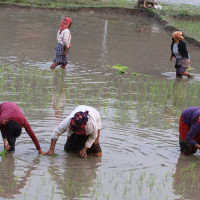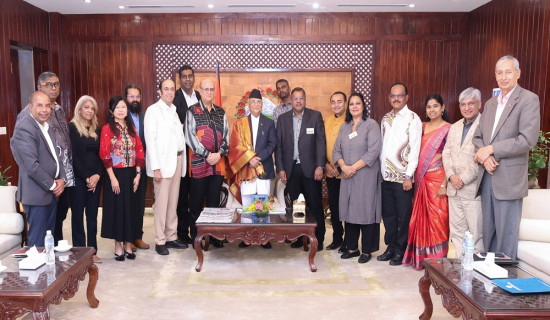- Sunday, 6 July 2025
ADB gives USD100 billion in new funding to support Asia, Pacific
By A Staff Reporter,Kathmandu, Sept. 30: The Asian Development Bank (ADB) approved capital management reforms that unlock USD100 billion in new funding capacity over the next decade to address the region’s overlapping, simultaneous crises.
The expansion of available funds will be further leveraged through mobilising private and domestic capital to move from the billions to trillions required to tackle the climate crisis, according to a press statement issued by the ADB on Friday.
The reforms were introduced through an update of the ADB’s Capital Adequacy Framework (CAF). They expand the bank’s annual new commitments capacity to more than USD36 billion—an increase of approximately USD10 billion, or about 40 per cent.
The expansion is achieved by optimising the ADB’s prudential level of capitalisation while maintaining its overall risk appetite.
The reforms also create a Countercyclical Lending Buffer to support the ADB developing member countries (DMCs) facing unexpected crises.
The measures, which will enable the ADB to provide up to USD360 billion of its own financing to its DMCs and private sector clients over the next decade, are designed to ensure that the ADB maintains its AAA credit rating and its ability to provide the DMCs with funding at low cost and with long maturities.
The reforms further safeguard the ADB’s AAA credit rating through the introduction of a recovery plan that would prevent capital erosion during periods of financial stress. The ADB’s capital adequacy framework is reviewed every three years, said the ADB.
“These important reforms will significantly expand the ADB’s ability to support a broad range of critical development efforts across Asia and the Pacific, including greater concessional resources for our vulnerable members,” said ADB President Masatsugu Asakawa.
“Our decision today is part of the ADB’s response to the call for multilateral development banks (MDBs) to do more with our resources and faster. These resources will help the region manage a complex set of overlapping crises, address gender inequality, and provide for basic needs in the context of the existential challenge of climate change.
This extra lending power will be extended and leveraged further by renewed efforts to mobilise private and domestic capital and maximise the impact of our work.”
Private capital mobilisation will play a critical role in leveraging billions to trillions, by expanding private sector involvement in the development agenda, read the statement.
The upstream actions will help improve macroeconomic policy and the institutional and enabling environment for private sector investment, spurring increased domestic and foreign investment.
Midstream advisory support will help create project pipelines and prepare bankable projects that can attract private-sector investment.
The downstream financing will be structured to crowd in private capital in development projects, including de-risking for the private sector. Upstream enablement, and mid and downstream mobilisation, will leverage ADB’s balance sheet, multiplying the resources available for the region’s development.
Economies must also mobilise more tax revenue, modernise tax authorities through digitalisation, and cooperate to ensure a fair and well-functioning international tax system.
Domestic resource mobilisation is vital in the effort to address debt sustainability and to achieve the Sustainable Development Goals.
ADB established the Asia Pacific Tax Hub in 2021 to provide an open and inclusive platform for strategic policy dialogue, knowledge sharing, and development coordination among ADB, its members, and development partners.
Asia and the Pacific’s poor and vulnerable communities are acutely exposed to escalating and interconnected crises that jeopardize their health, educational outcomes, and livelihoods.
An estimated 155 million people, or 3.9 per cent of the region’s population, lived in extreme poverty in 2022 and many, in particular women, face a cost-of-living crisis that has made food and other essential commodities and services unaffordable.















